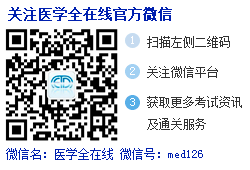ę╗Īó└ĒĮŌ╬─š┬Ą─ąą╬─╦╝┬Ę
ĪĪĪĪėóšZ╬─š┬Ą─ąą╬─╠ž³c(di©Żn)ę╗░Ń╩ŪŽÓī”╣╠Č©Ą─ĪŻ╬─š┬Ą─ĮY(ji©”)śŗ(g©░u)ŅÉą═ę▓ŽÓī”╣╠Č©ĪŻ╬ęéāęį2003─Ļ┐╝čąėóšZķåūx└ĒĮŌįćŅ}Ą─Ą┌Č■Ų¬╬─š┬×ķ└²üĒšf├„ė^³c(di©Żn)šōūCą═╬─š┬Ą─ąą╬─╠ž³c(di©Żn)�ĪŻ
ĪĪĪĪę“?y©żn)ķ╦∙ėąĄ─╬─š┬Č╝╩ŪüĒūį¼F(xi©żn)īŹ(sh©¬)╔·╗Ņ,ę“┤╦,ū„š▀Ą─╬─š┬▒žČ©ć·└@ų°ę╗éĆ(g©©)ų„Ņ}biomedical researchvs. animal rights advocates�Ż╗
ĪĪĪĪū„š▀═©│ŻĢ■(hu©¼)ęįę²čį╗“╩┬└²ę²│÷ę¬ūhšōĄ─įÆŅ}To paraphrase 18th -century statesman Edmund Burke, all that is needed for the triumph of a misguided cause is that good people do nothing.���Ż╗
ĪĪĪĪ╚╗║¾ū„š▀▒žČ©ę¬╠ß│÷ūį╝║Ą─ė^³c(di©Żn)Scientists need to respond forcefully to animal rights advocates, whose arguments are confusing the public and thereby threatening advances in health knowledge and care.
ĪĪĪĪĮėŽ┬üĒū„š▀Ģ■(hu©¼)ė├┼e└²Ą╚ĘĮĘ©üĒšōūCūį╝║Ą─ė^³c(di©Żn)Ż║
ĪĪĪĪ1.For example, a grandmotherly womanĪŁ
ĪĪĪĪ2.Scientists must communicate their message to the public in a compassionate, understandable wayĪ¬Ī¬Ī¬in human terms, not in the language of molecular biology�����Ż╗
ĪĪĪĪį┌╬─š┬Ą─ĮY(ji©”)╬▓╠Ä,ū„š▀▀ĆĢ■(hu©¼)╠ß│÷ĮŌøQå¢Ņ}Ą─ĘĮĘ©Much can be done.
ĪĪĪĪ▓╗ļy┐┤│÷,╩ņų¬╬─š┬Ą─ąą╬─╦╝┬Ę,ī”ĮŌ┤╬─š┬Ą─ų„ų╝┤¾ęŌŅ}ĪóČ╬┬õā╚(n©©i)Ą─═Ų└Ē┼ąöÓŅ}ęį╝░ū„š▀Ą─ė^³c(di©Żn)æB(t©żi)Č╚Ņ}Č╝╩ŪśOėąÄ═ų·Ą─��ĪŻ╬ęéāĮ©ūh┐╝╔·┼¾ėčéāį┌ū÷┴╦ę╗Č©┴┐Ą─Üv─ĻšµŅ}ų«║¾,╗ž▀^Ņ^üĒ┐éĮY(ji©”)ę╗Ž┬╬─š┬Ą─ĮY(ji©”)śŗ(g©░u)╠ž³c(di©Żn),▀@ī”ęį║¾Ą─ķåūx║═ĮŌŅ}Č╝Ģ■(hu©¼)┤¾ėą±įęµ�ĪŻ
ĪĪĪĪČ■ĪóŠÜ│╔┐ņ╦┘ĘųŪÕ╬─š┬ų„┤╬ā╚(n©©i)╚▌Ą─▒ŠŅI(l©½ng)
ĪĪĪĪę╗Ų¬╬─š┬╦∙░³║¼Ą─ā╚(n©©i)╚▌║▄ČÓ,Č°įćŅ}═∙═∙ų╗┐╝▓ķŲõų„ę¬╦╝Žļė^³c(di©Żn)║═▓┐Ęų╝Ü(x©¼)╣Ø(ji©”)ā╚(n©©i)╚▌,ę“┤╦╬ęéāūx┴╦╬─š┬║¾├µĄ─ķåūxįćŅ}ęį║¾,ę╗Č©┤_┴ó▀@śėę╗éĆ(g©©)ęŌūR,╝┤,ų╗ĻP(gu©Īn)ūó║═▓ķšę║═įćŅ}ėąĻP(gu©Īn)Ą─ā╚(n©©i)╚▌,ų╗ę¬─▄ē“╗ž┤å¢Ņ},▓╗▒ž┼¬Č«├┐ę╗éĆ(g©©)╝Ü(x©¼)╣Ø(ji©”)����ĪŻ▀@ĘNķåūxĘĮĘ©Ą─ę└ō■(j©┤)╩Ū,┐╝čąķåūx«ö(d©Īng)ųąĄ─įćŅ}60%ęį╔ŽŅ}ą═×ķ╝Ü(x©¼)╣Ø(ji©”)Ņ},ĮŌ┤▀@ą®įćŅ},ų╗꬚ęĄĮŲõį┌įŁ╬─ųąĄ─│÷╠Ä,Š═─▄ē“┤_Č©┤░Ė,▓╗ąĶę¬┬ō(li©ón)ŽĄ╬─š┬Ą─Ųõ╦¹ā╚(n©©i)╚▌��ĪŻķåūx╬─š┬«ö(d©Īng)ųą│Ż│Żėąę╗ą®┼e└²Ą─ĄžĘĮ,Ųõ╦∙įO(sh©©)╔µ╝░Ą─╚╦╬’═∙═∙ėą║▄ķLĄ─Č©šZ,▒╚╚ń,Nancy Dubler, director of Montefiore Medical Center, contends thatĪŁGeorge Annas, chair of the health law department at Boston University, maintains thatĪŁī”ė┌▀@ą®╝Ü(x©¼)╣Ø(ji©”),╬ęéāę╗░Ń▓╗ė├ī”╚╦├¹║¾Ą─Ž▐ųŲšf├„▓┐Ęų╠½ūóęŌ,ųž³c(di©Żn)╩Ū┐┤▀@éĆ(g©©)╚╦╦¹Ż»╦²ėą╩▓├┤ė^³c(di©Żn)�����ĪŻ
ĪĪĪĪ╚²����ĪóĘųŪÕ╬─š┬ųąĄ─ė^³c(di©Żn)║═╩┬īŹ(sh©¬)╝Ü(x©¼)╣Ø(ji©”)
ĪĪĪĪģ^(q©▒)Ęų╩┬īŹ(sh©¬)║═ė^³c(di©Żn)╩Ūķåūx└ĒĮŌ─▄┴”ūŅ×ķųžę¬Ą─ę╗Łh(hu©ón)ĪŻ▒Ē├„ū„š▀ė^³c(di©Żn)Ą─Šõūėę╗░Ń×ķ┼ąöÓŠõ,╚ń,There are reasons to be optimistic. Sad to say, this project has turned out to be mostly low level findings about factual errorsĪŁ. I believe that the most important forces behind the massiveMŻ”A wave are the same that underlie the globalization processĪŁAll these are beneficial, not detrimental, to customers.╬─š┬ųą╩┬īŹ(sh©¬)╝Ü(x©¼)╣Ø(ji©”)═∙═∙ĦėąĖ³╝ė├„’@Ą─ś╦(bi©Īo)ųŠ,╚ń, F or example, For instance, In America,▀Ćėąę╗ą®öĄ(sh©┤)ō■(j©┤)Ą╚Č╝╩Ū╩┬īŹ(sh©¬)╝Ü(x©¼)╣Ø(ji©”)Ą─ś╦(bi©Īo)ųŠ���ĪŻ

